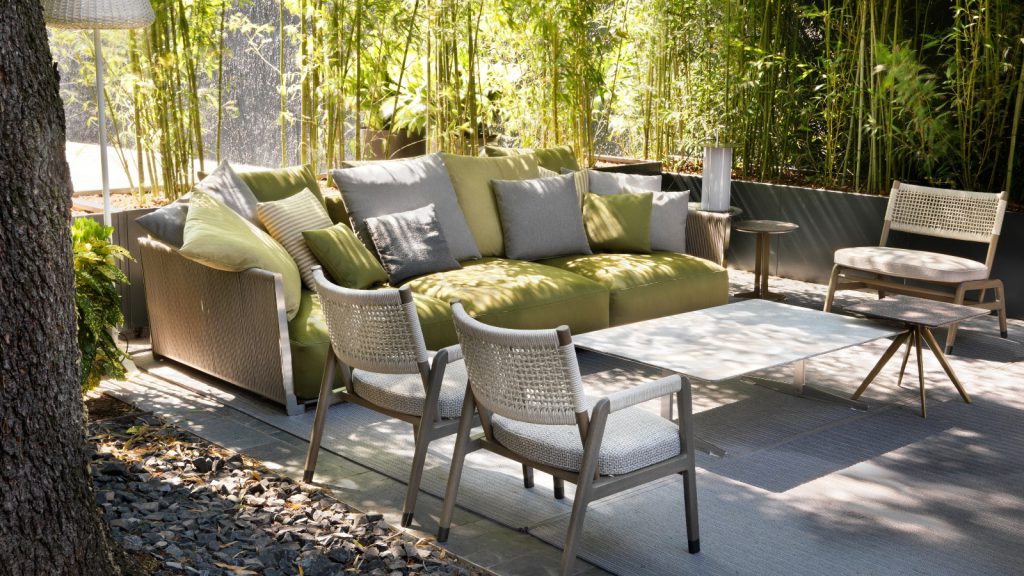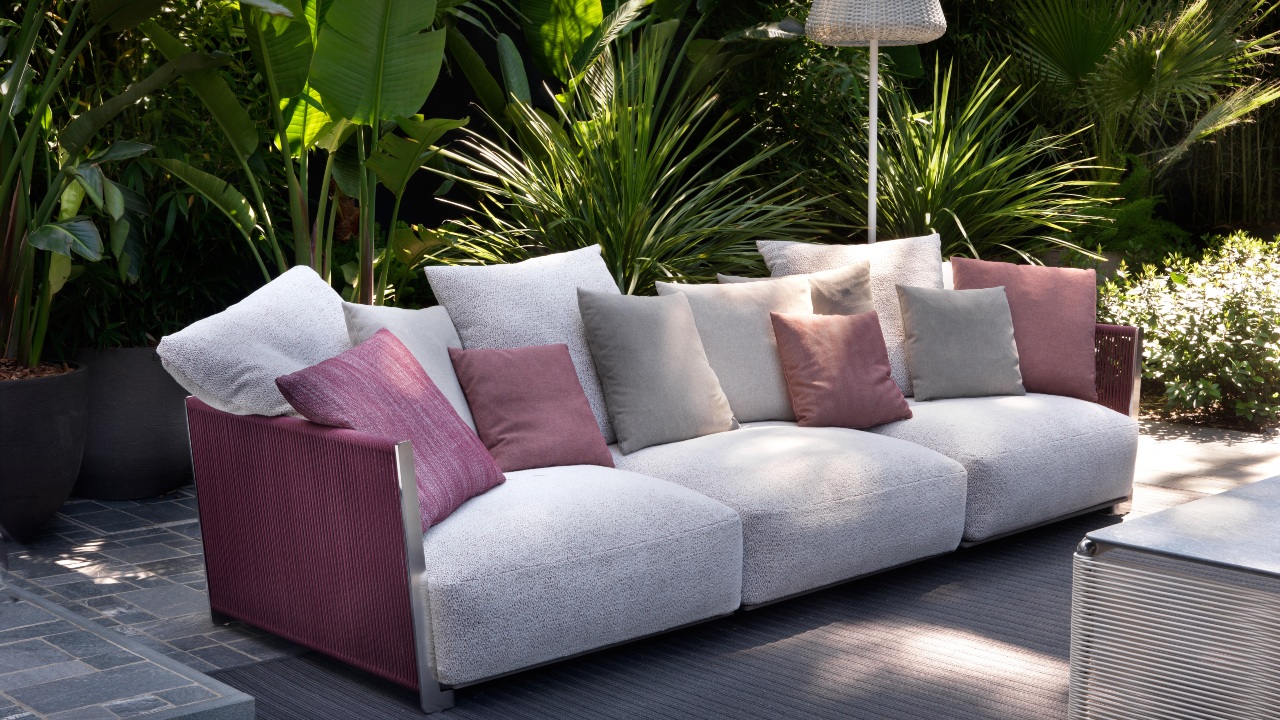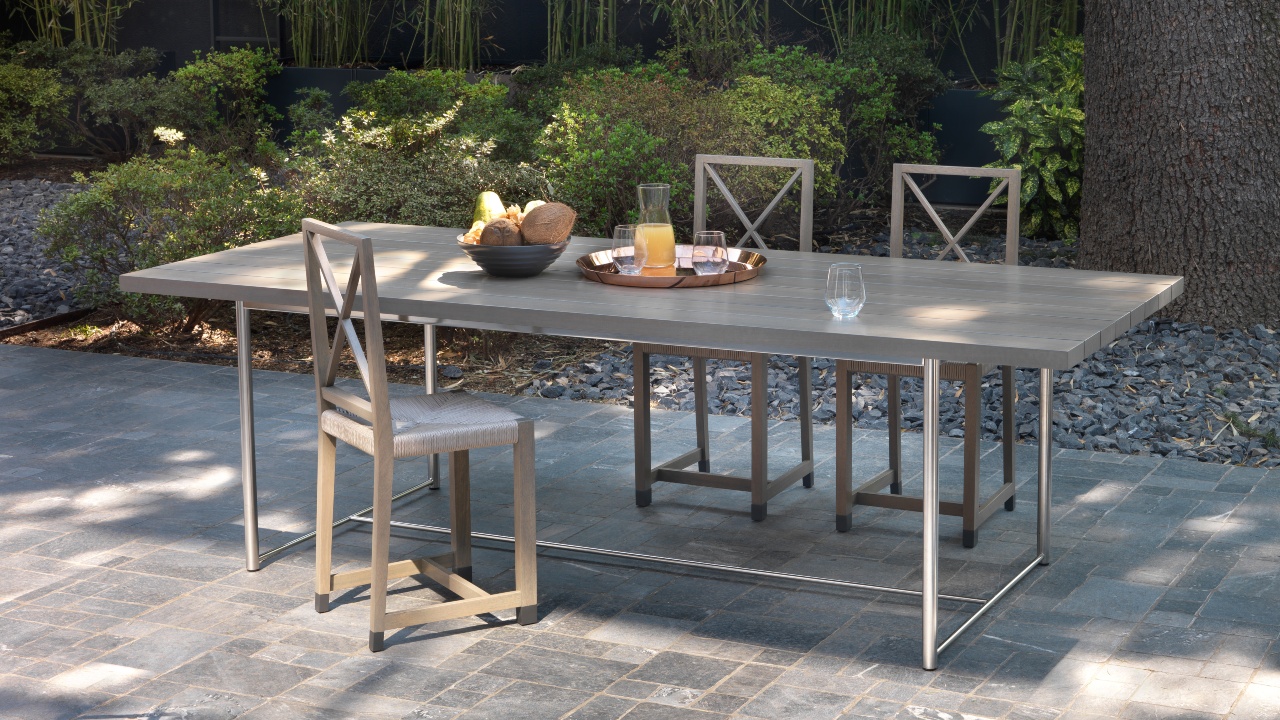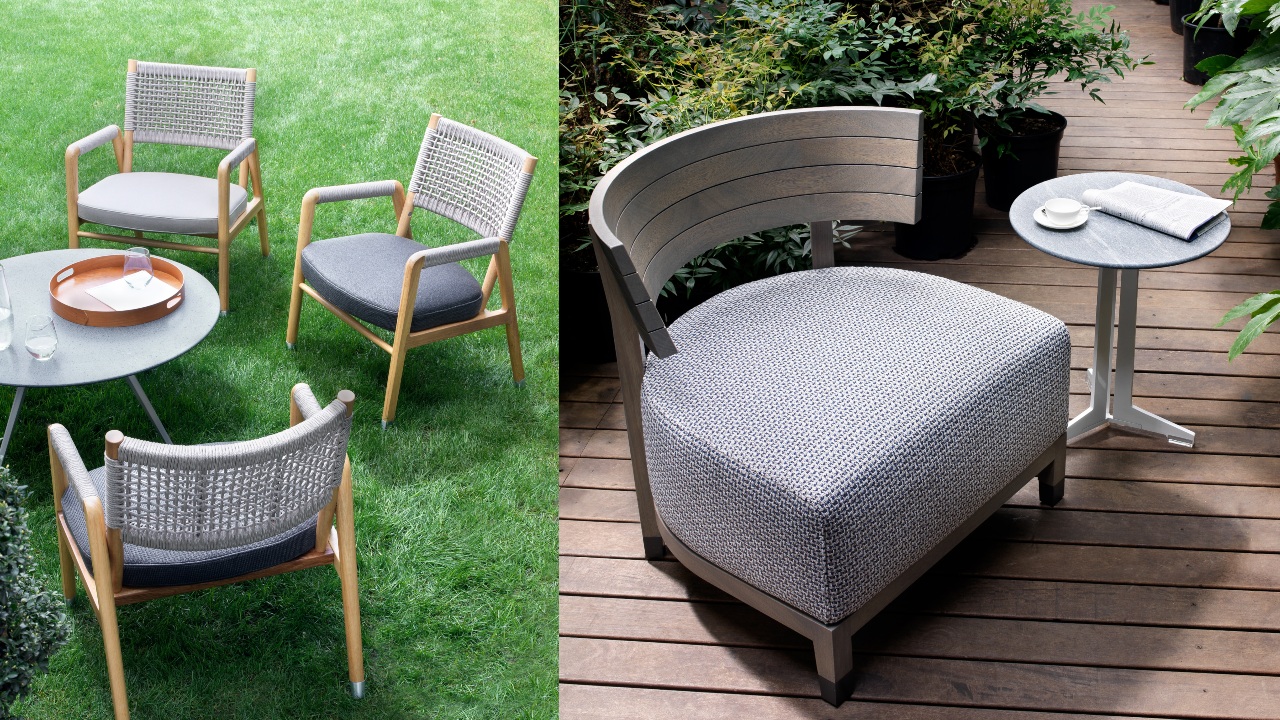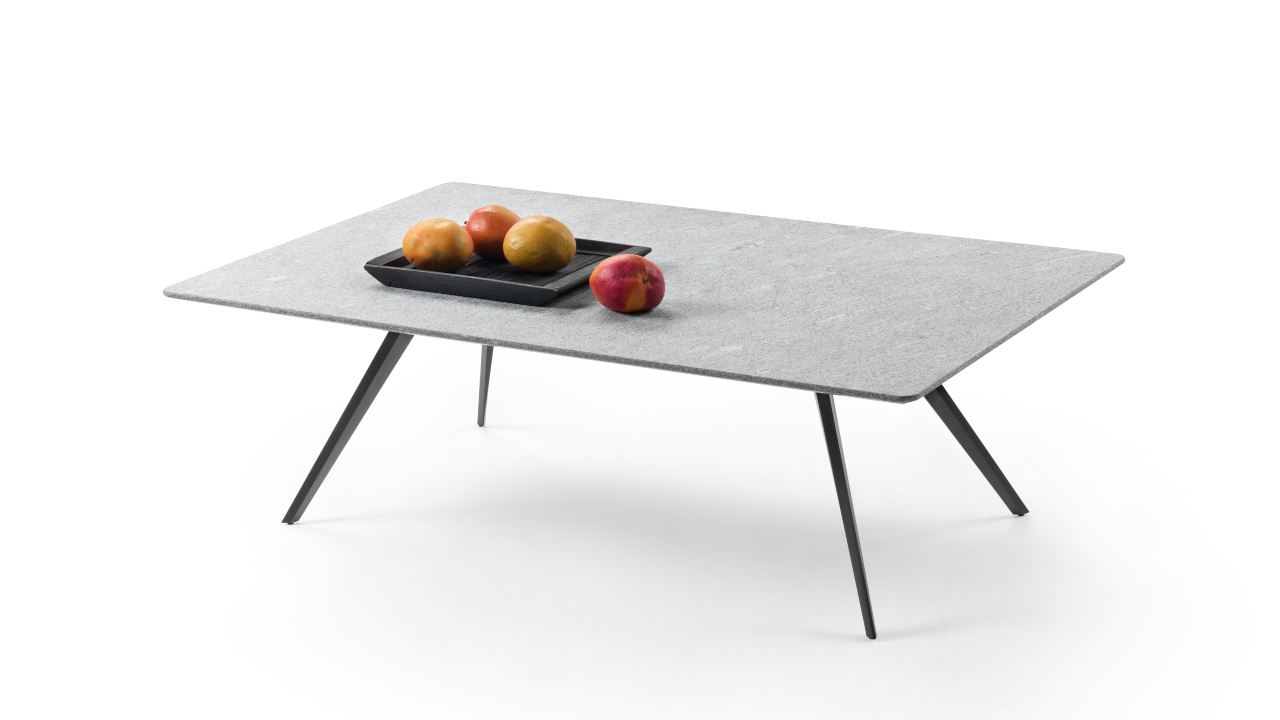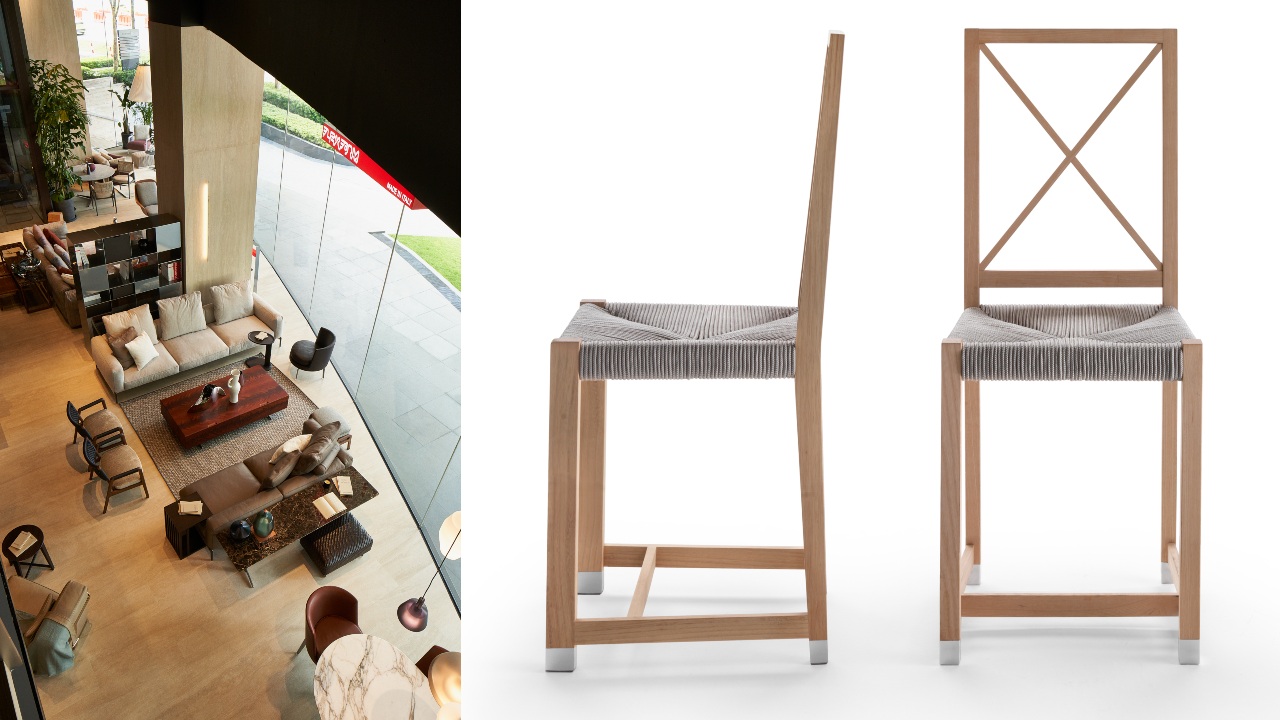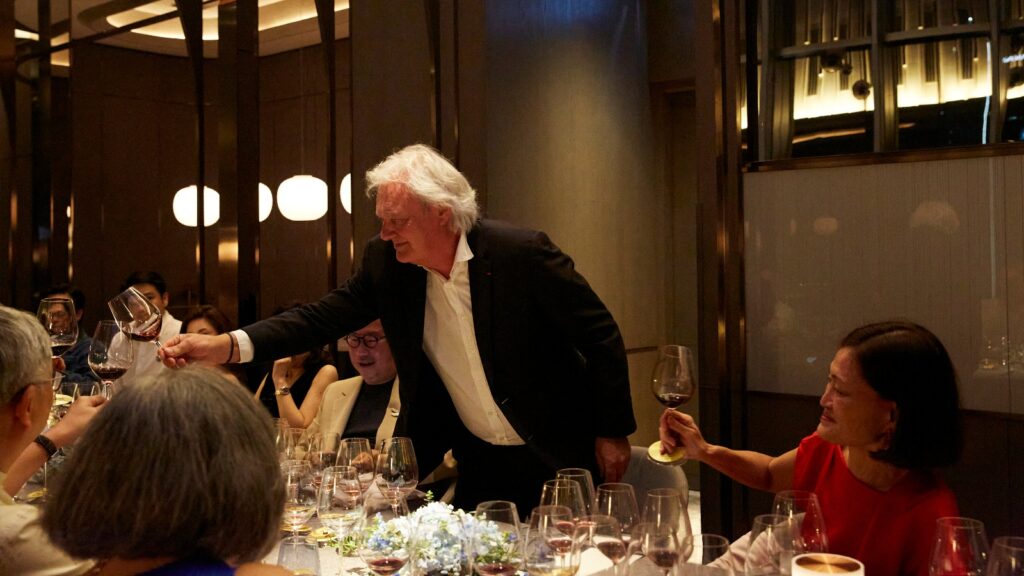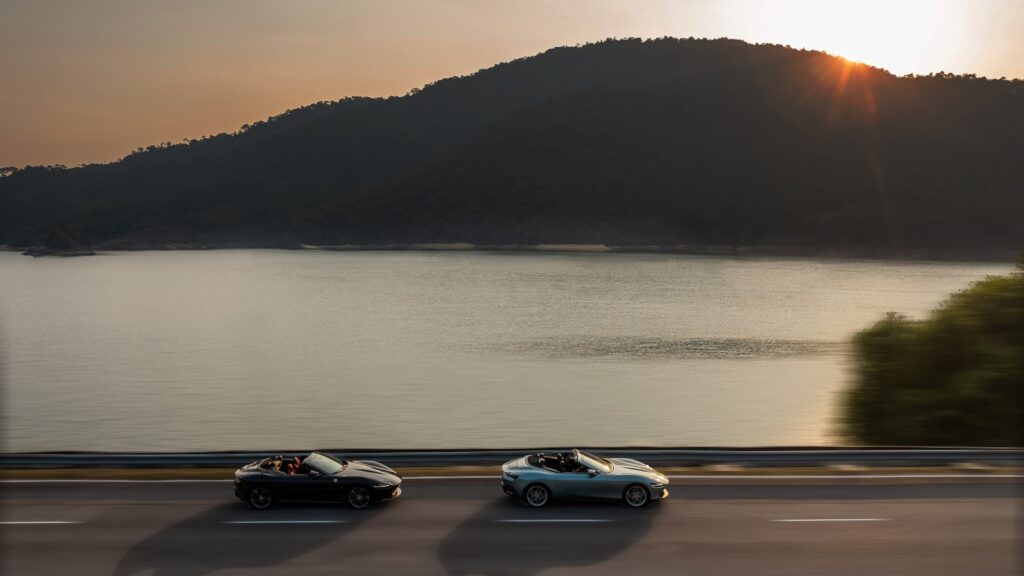The most recent Salone del Mobile Milano ushered in the first-ever outdoor range by Flexform, a collection which has been six years in the making. “We’ve had outdoor pieces before, having been commissioned for yacht and resort projects over the years,” says Flexform’s Asia Pacific Director Tien Loi who was recently present at the Flexform 2019 Indoor and Outdoor collection launch at its showroom at Newton 200 in Singapore. “But this full range was a long process, because the Galimberti family and Antonio Citterio had wanted a complete collection to be presented,” he says. The latter has played a pivotal part in Flexform’s design language for the large part of four decades instituting a generous sense of proportion and inducing a relaxed way of seating.
And so, with its first outdoor collection, the brand was careful to ensure that its long-nurtured ethos across three generations was preserved. “The idea of ‘living in your space’ has become an important part of what Flexform is about,” Loi says, pointing out that Flexform’s R&D efforts go down to the way people sit to ensure comfort is paramount to users. On the durability front, Flexform’s confidence for its outdoor collection stems from the harsh conditions of sea salt, humidity and sub-arctic climate which its superyacht commissions endure.
This recent outdoor collection of over 30 pieces offer a range of sofas, armchairs and footstools, to coffee tables and a three-metre dining table. Its Zefiro dining table – mainstay design from its indoor collection – has been repurposed for the outdoors with sleek cast-aluminium legs protected by an epoxy powder coat, with stone tops of either Beola argentata, pietra del Cardoso, lava stone or porphyry. The choice of stone are quarried from the Piedmont mountains which possess properties of high resistance to humidity, fog, cool winters and hot summers. On top of this, Flexform applies a “breathable treatment” to ensure surfaces are resistant to oil and water, but retain the tactility of the natural material. “Our fabric system is not waterproof but water-resistant,” Loi points out. “It means that we retain the ventilation to keep the feeling of the material while simultaneously ensuring a sanitary product as water won’t pool inside and cause mold.”
Borrowing from its nautical forays, Flexform utilised marine plywood – used in sailboats – for its sofa base and stainless steel 316 for armrest and backrest structures in its sofas, replicating the highest grade of steel used for sailing boats to withstand the aggressions of sea spray and salt. On its Moka Outdoor chair – reinterpreted from its iconic 1985 design – woven polyester fibre and polyurethane rubber is used – offering the requisite stretch and flexibility for those settling into the chairs. Meanwhile, the choice of solid African Iroko for wood was made for its durability to temperature extremes. At the very tips of these wooden legs are thoughtfully integrated die-cast metal to ensure that the wood is not continually exposed to contaminants on a pool deck or damp garden. (On steel chair legs, a water-repellent thermoplastic material cover is used.)
A recurring motif in this outdoor collection is its woven patterns employing fully recyclable polypropylene materials possessing antistatic, mold- and stain resistant qualities. This woven motif becomes the core design in its Vulcano seating system and daybeds. “We have been enjoying a lot of requests since our launch for our outdoor collection for residential projects – al fresco areas, patios and pool decks,” Loi says. “I guess it is a natural progression for us – and our use of stone for the dining tables has even resulted in our clients asking if they can have it for indoors, maybe because they will feel less guilty eating off a stone top than a marbled one.”
Shaping these beautiful and functional realities at Flexform can be traced back to its geographic heritage in Meda, in Italy’s province of Monza and Brianza – where the prospects of agriculture were poor. “This is why many in the area turned to furniture making,” Loi says. “Our artisans have multi-generational know-how and even with modern machining like laser-cutting and 3D printing, we still need these artisans to possess the know-how in combining the materials, in weaving the saddle leather and using their own hands to create a collection which will elicit a real emotional response.”
